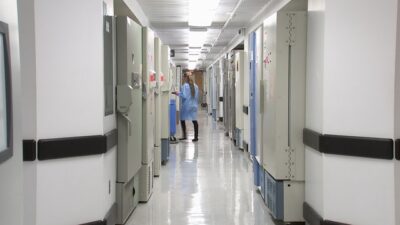Nurses and law enforcement professionals often have trouble identifying bruises on individuals with black or brown skin. This can prevent them from dealing with situations of domestic abuse or detecting underlying health issues, such as internal bleeding.
So, Dr. Katherine Scafide decided to do something about it. She’s a forensic nurse and associate professor at George Mason University who has worked with trauma patients for years. She said she was shocked to see so many bruises on victims of assault and domestic abuse. “I became fascinated by the specific care that they needed in a time in which they were quite vulnerable,” Scafide said.
But there was a problem. These injuries were harder to see with the naked eye when found on patients of color, particularly those of African or Hispanic descent.
“Without being able to see them, there’s nothing for me to document,” Scafide said. “If I can’t document the injury, the individuals who have experienced this violence, unfortunately, they don’t have the evidence to really support the possible prosecution of the assailant.”
But the bruises were there hiding in plain sight, so Scafide looked at possible Light Source Alternatives (LSA) to make the injuries more visible.
“We were able to discover which wavelengths provide the best ability to detect bruises,” Scafide said. “And we discovered blue and the violet lights work the best.”
She led a study that showed ALS to be five times better at detecting bruises on darker skin than traditional white lights. As a nurse, she says each bruise tells a story.
“Bruises tell us a lot about what has happened to a particular patient who’s experienced violence and unfortunately if I can’t see the bruise clearly it really limits my ability of what to document and what to report in the medical record,” Scafide said.
She developed the technology in Baltimore, Maryland. It is now being used at Mercy Medical Center and its findings have already been introduced in court as evidence in domestic abuse and assault cases.
But she hopes to expand its reach in the coming years. “Forensic nursing units haven’t necessarily adopted this equipment for a variety of reasons: due to the lack of clinical practice guidelines, the cost of the equipment, the concern that there isn’t sufficient research to support its practice, and we’re looking to change that,” Scafide said.
Close to half of all women report experiencing physical violence, sexual violence, or stalking by an intimate partner at some point in their lives. The number is slightly higher for black women at 54%.
The U.S. Justice Department recently praised her work as a marvel of inclusive research. “I think this speaks to the embedded racial disparities in a lot of the research we do to date, that all of these methodologies that were so traditional were developed to identify bruises on white skin,” said Nancy La Vigne, director of the National Institute of Justice, which funded the study.
Nancy Downing, an associate professor at the Center for Excellence in Forensic Nursing at Texas A&M University, said the findings have the potential to revolutionize the way providers investigate possible cases of assault. She is glad Scafide is working on developing a set of guidelines on how nurses should use this technology.
“It’s really important to me that we are not promoting something to be used without people understanding how to use it correctly,” Downing said.
If you or someone you know is experiencing domestic violence, contact the National Domestic Violence Hotline by calling 1-800-799-SAFE (7233), visiting www.thehotline.org or texting LOVEIS to 22522.
















